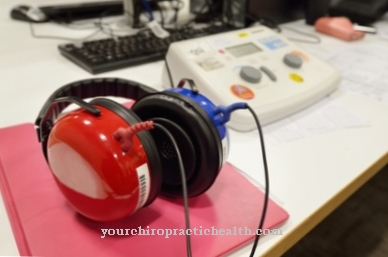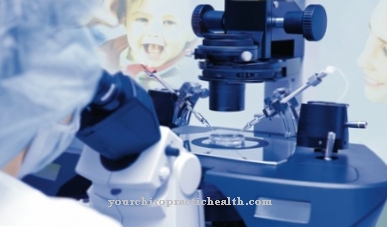The In vitro maturation (IVM) is a variant of in vitro fertilization (IVF) and thus a method of artificial insemination. Egg cells previously removed mature in a Petri dish until they are then artificially fertilized with the man's semen and inserted into the woman's uterus.
What is in vitro maturation?

As a form of in-vitro fertilization, in-vitro maturation also belongs to the assisted reproductive process. In assisted reproduction, also called artificial insemination, the treating doctor combines the man's semen and the woman's egg inside or outside the woman's body.
In in-vitro maturation, the union takes place outside the female body, so that an already fertilized egg is inserted into the woman's uterus. The procedure may be used in Germany if a couple regularly engages in unprotected sexual intercourse for at least one year and still does not become pregnant.
In-vitro maturation is considered gentler than classic in-vitro fertilization. In this, the woman is first given high doses of hormones with the aim of allowing several egg cells to mature in the woman's body at once. With in-vitro maturation, the egg cells are removed from the ovaries in immature form and then mature in the laboratory.
Function, effect & goals
In-vitro maturation begins with an ultrasound and a blood sample on the fifth, sixth or seventh day of the woman's cycle. Ultrasound measures the number and size of all follicles. In addition, the height of the lining of the uterus is checked. An optimally formed uterine lining is relevant so that the fertilized egg can implant later. In addition, a blood test for the hormones LH, progesterone and estradiol is carried out.
If these hormones are not within the normal range, there may be problems with artificial insemination and the desired result may not be achieved. In summary, these examinations are used to check whether an in vitro maturation in this cycle is at all promising or whether further preparatory measures have to be taken first.
If all the requirements are met, the egg cells will be removed around the eighth day of the cycle. The woman must be anesthetized for this. First, the egg cells removed from the patient are then examined for defects in the genetic material in order to minimize the risk of a hereditary disease. If there are no genetic defects, the egg cells are brought to the laboratory and mature there in the test tube or in the Petri dish.
The man's sperm is released one day after the egg collection. The sperm are then merged with the egg cell for fertilization. If fertilization is successful, the woman's fertilized egg is then inserted either immediately or in the next cycle. In order to increase the likelihood of successful implantation of the embryo, a special and standardized preparation of the uterine lining takes place before the embryo transfer. In-vitro maturation is particularly suitable for patients who suffer from the so-called polycystic ovary syndrome (PCO). With conventional artificial insemination, there is a risk of hormonal overstimulation in these patients.
In addition, the in vitro maturation method can also be used if pregnancy is not desired immediately after the egg cells have been removed. In contrast to mature egg cells, immature egg cells can also be obtained from frozen ovarian tissue. This offers cancer patients in particular who are being treated with chemotherapy or radiation therapy the option of fertility treatment once the cancer therapy has been completed.
Risks, side effects & dangers
As promising as the advantages of in-vitro maturation sound, it is a very new procedure that is still considered experimental. Worldwide there are only about 400 children who were conceived with the support of the IVM.
IVM treatment is easier to perform and gentler on women than traditional in vitro fertilization, but the success rate is significantly lower. Only 10 to 15% of the women treated actually become pregnant. With IVF, however, fertilization succeeds in 40% of the cases. However, this usually requires several treatment cycles.
Egg retrieval is an operation with all common surgical risks. The ovaries, uterus or other adjacent organ structures can be injured. Infections of the abdomen are also conceivable. With anesthesia, there is a risk of cardiovascular disorders and even cardiac arrest. So far, IVM treatment does not seem to have a negative effect on pregnancy, childbirth or the child's postnatal development. Since, as already mentioned, this is still a very young process, there are no long-term data on the development of children conceived with the help of in vitro maturation.
In addition to the physical risks for women and the possible complications in child development, the psychological stress should not be underestimated. Couples who opt for artificial insemination have often suffered from childlessness for years and are often also under the pressure to perform that this time it has to work out. If the IVM fails, those affected often lose their supposed last lifeline, leading to depression and, not infrequently, to a failure of the relationship.
In addition to the psychological burden, there is also a financial burden. IVM is a rather complex procedure that requires some expensive pre-tests. This results in considerable material costs for the ultrasound, the hormone measurements, the egg puncture, the anesthesia, the laboratory and the necessary medication. The IVM treatment is not reimbursed by the health insurance, so the couple bears all costs alone.












.jpg)



.jpg)










.jpg)
